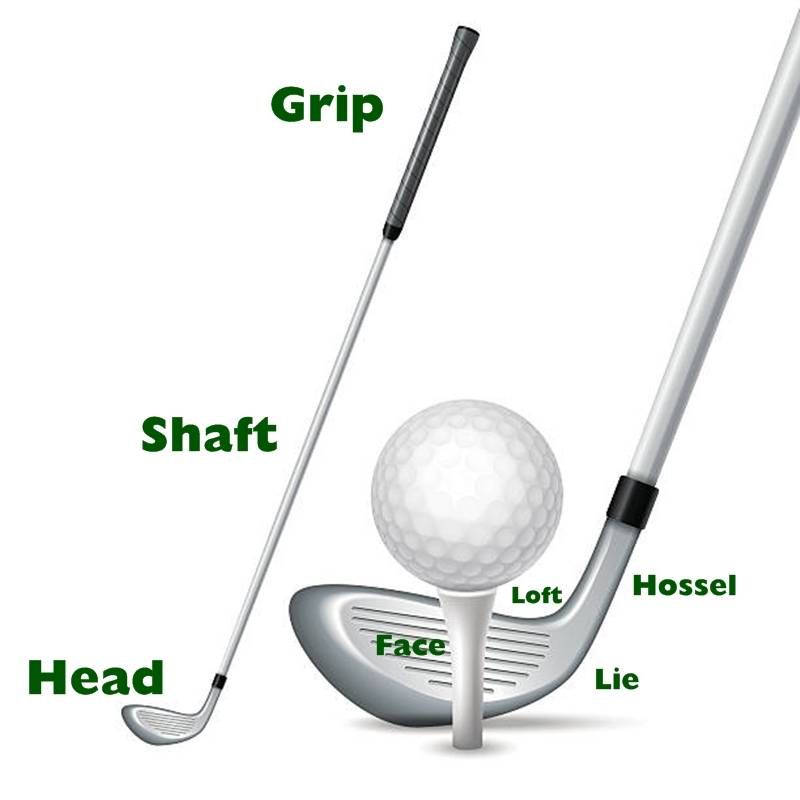To cut a golf shaft, measure and mark the desired length, wrap masking tape around the mark to prevent splintering, and secure the shaft in a vise with a rubber clamp. Use a fine-tooth hacksaw or a Dremel tool with a cutting wheel to cut through the shaft gently, then smooth the edges with sandpaper or a fine file.

Tools and Materials Needed
- Hacksaw or Mini Shaft Cutter: A fine-toothed hacksaw is suitable for both steel and graphite shafts, but a mini shaft cutter can provide more precision, especially for graphite.
- Measuring Tape: For accurate measurements of how much you want to cut off.
- Masking Tape: To mark the cutting point and help prevent splintering.
- Sandpaper: To smooth the edges after cutting.
- Vise with Protective Clamps: To hold the shaft securely without damaging it.
- Safety Glasses: To protect your eyes from debris.
Step-by-Step Instructions
1. Measure and Mark
- Determine how much length you want to remove from the shaft.
- Use the measuring tape to measure from the grip end (butt) or the club head end (tip), depending on your needs.
- Mark the cutting point clearly with a pencil or marker.
- Wrap masking tape around the shaft at the cutting point to help reduce splintering.
2. Secure the Shaft
- Place the shaft in the vise, ensuring that the section to be cut is accessible.
- Use rubber clamps to hold the shaft securely without causing damage.
3. Cut the Shaft
- For Graphite Shafts: Use a mini shaft cutter or a fine-toothed hacksaw. Start cutting at the marked point, applying gentle, consistent pressure. It’s advisable to cut slowly to avoid splintering.
- For Steel Shafts: A hacksaw will work effectively. Follow the same cutting method as for graphite, ensuring you maintain a steady hand.
4. Smooth the Edges
- After cutting, you may find rough edges. Use sandpaper to smooth these out, ensuring there are no sharp edges that could damage grips or hands.
5. Cleanup
- Dispose of any debris and graphite dust properly. Use a vacuum or brush to clean your workspace.
Additional Tips
- Cutting from the Butt End vs. Tip End: Generally, when shortening a shaft, you cut from the butt end. If you need to adjust the flex or performance characteristics, you may need to trim from the tip end, but this requires understanding specific trimming charts for the shaft model you are using.
- Consult Trimming Charts: If you are trimming for performance reasons, refer to the manufacturer’s trimming charts to ensure you are cutting the correct amount from the tip end.
- Practice Caution: Always wear safety glasses to protect your eyes from any debris, especially when cutting graphite shafts, which can produce fine dust.
By following these steps, you can successfully cut a golf shaft to your desired length, improving your comfort and performance on the course. If you are unsure or uncomfortable with the process, consider consulting a professional club fitter for assistance.
How to cut a graphite golf shaft
To cut a graphite golf shaft, measure and mark the desired length, then secure the shaft in a vise with a rubber clamp, wrap masking tape around the cutting point, and use a Dremel tool or fine-tooth hacksaw to cut through the shaft gently. Smooth the edges with sandpaper or a fine file to finish.

Here’s a step-by-step guide to help you through the process safely and effectively:
Tools and Materials Needed
- Graphite Shaft Cutting Blade or Fine-Tooth Hacksaw: A specialized blade for graphite is ideal, but a fine-tooth hacksaw will work as well. Avoid using standard hacksaw blades with coarse teeth, as they can splinter the shaft.
- Vise with Protective Rubber Vise Clamps: This will hold the shaft securely without causing damage.
- Masking Tape: Used to mark the cutting spot and minimize splintering.
- Measuring Tape or Ruler: For precise measurements.
- Pencil or Marker: To mark the cutting point.
- Sandpaper (Medium and Fine Grit): To smooth out the edges after cutting.
- Safety Glasses and Dust Mask: Essential for eye protection and to prevent inhalation of graphite dust.
- Shop Vacuum or Brush: For cleanup after the cutting process.
Step-by-Step Instructions
1. Safety First
- Wear safety glasses to protect against flying particles.
- Use a dust mask to avoid inhaling graphite dust.
- Work in a well-ventilated area.
2. Measure and Mark
- Determine how much length you want to remove.
- Use the measuring tape to measure from the tip or butt of the shaft.
- Mark the cutting point clearly with a pencil or marker.
- Wrap masking tape around the shaft at the cutting point to help reduce splintering.
3. Secure the Shaft
- Place the shaft in the vise, ensuring the section to be cut is accessible.
- Use rubber vise clamps to prevent damage to the shaft.
- Tighten the vise enough to hold the shaft firmly, but avoid over-tightening.
4. Make the Cut
- Using your fine-tooth hacksaw or graphite cutting blade, begin cutting at the marked point.
- Apply gentle, consistent pressure while cutting.
- To minimize splintering, consider cutting halfway through the shaft, then rotating it 90 degrees to complete the cut.
5. Smooth the Edges
- After cutting, you may find rough edges. Use medium-grit sandpaper to smooth these out.
- Follow up with fine-grit sandpaper for a polished finish.
6. Cleanup
- Use a shop vacuum or brush to clean up any graphite dust and debris from your workspace.
Additional Tips
- Avoid Using a Tubing Cutter: This tool can damage graphite shafts, leading to fraying and cracking.
- Consider Using a Rod Saw Blade: This tool is effective for cutting graphite shafts as it minimizes splintering and can cut through the material quickly.
- Practice Patience: Cutting slowly and steadily will yield the best results and prevent damage to the shaft.
By following these steps and using the appropriate tools, you can successfully cut a graphite golf shaft while maintaining its integrity. If you're uncertain about the process, consulting with a professional clubmaker can provide additional guidance.
How to remove a golf shaft
To remove a golf shaft, securely clamp the club in a vice, apply heat to the hosel with a heat gun or torch to loosen the epoxy, and then use a shaft extractor to gently pull the shaft out. Clean any remaining epoxy from the hosel and the shaft tip if reusing the shaft.

Here are the steps to remove a steel or graphite shaft:
For Steel Shafts
1. Clamp the club head in a vise to hold it securely in place.
2. Use a propane torch or heat gun to heat up the hosel (the part of the club head where the shaft is inserted) for about 20-30 seconds. Keep the heat moving to avoid discoloration.
3. Once heated, use heavy gloves to grip the shaft and pull it out of the hosel. The heat will break down the epoxy bond holding the shaft in place.
4. Clean off any excess epoxy from the hosel using a wire brush or sandpaper. This will make it ready for a new shaft.
For Graphite Shafts
1. Clamp the club head in a vise and use a heat gun to heat up the hosel. Graphite shafts require more heat and patience compared to steel.
2. Continuously move the heat around the hosel for several minutes until the epoxy softens. Be careful not to overheat the club head.
3. Once heated sufficiently, grip the shaft and slowly pull it out of the hosel. The epoxy bond should release with some gentle pressure.
4. Clean the hosel and shaft tip of any remaining epoxy using a utility knife or sandpaper.
Additional Tips
- Have a wet towel ready to catch any melting ferrules or drippings.
- Be cautious when using a torch and follow all safety precautions. Ensure proper ventilation as the fumes can be dangerous
- For shafts that break very low in the hosel, you may need to drill out the remaining shaft piece.
By following these steps, you can safely and effectively remove a golf shaft from a club head, allowing you to make repairs or customize your equipment as needed.







.jpg)

.jpg)





